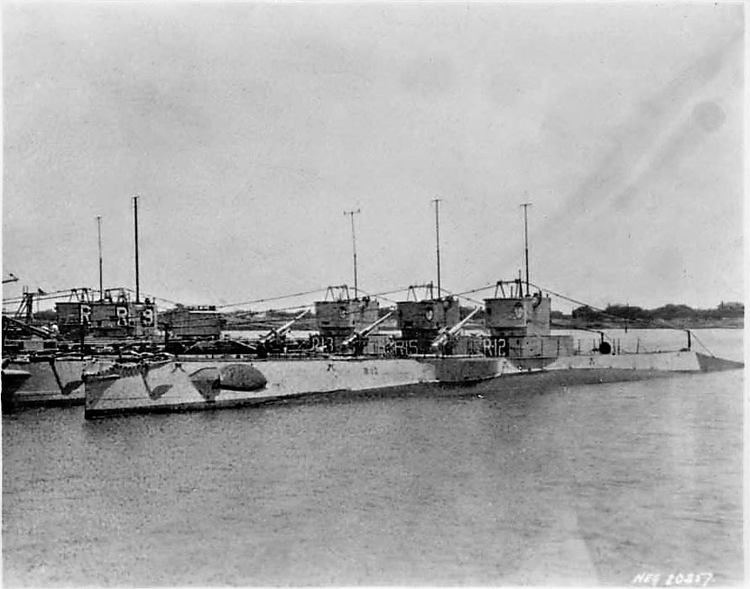Name R class | Built 1917-1919 | |
 | ||
Builders Fore River Shipyard (R-1 to R-14)Union Iron Works (R-15 to R-20)Lake Torpedo Boat (R-21 to R-27)Electric Boat (4 boats for Peru) Operators | ||
The R-class submarines were a class of United States Navy submarines active from 1918 until 1945. With the first of the class laid down following the American entry into World War I, they were built rapidly. Although R-15 through R-20 were completed July–October 1918, they did not serve overseas, and the bulk of the class were not completed until after the Armistice.
Contents
Design
Service
The Group 1 boats were decommissioned in 1931, but were recommissioned in 1940 to serve as training boats at Submarine Base New London, Connecticut. Three (R-3, R-17, and R-19) were transferred to the United Kingdom's Royal Navy as HMS P.511, HMS P.512, and HMS P.514 in 1941-1942. P.514 was lost on 21 June 1942 in a collision with the Canadian minesweeper HMCS Georgian due to being mistaken for a U-boat. R-12 was lost on 12 June 1943 in an accident off Key West, Florida.
At some point between the wars the US R class were modified for improved rescue ability in the event of sinking. A motor room hatch was added, the motor room being the aftermost compartment. The tapered after casing became a step as a result of this modification.
At least one R-class submarine can be seen briefly in the 1943 movie Crash Dive, filmed at the New London submarine base.
Electric Boat built four R-class boats for the Peruvian Navy (R-1 to R-4). Built after World War I using materials assembled from cancelled S-class submarines, they were refitted in 1935–36 and 1955–56, and renamed Islay, Casma, Pacocha, and Arica in 1957. They were discarded in 1960.
Ships in class
The 27 submarines of the R class were:
Group 1 (Electric Boat design)
Group 2 (Lake Torpedo Boat Company design)
